Wrist pain - Caused by inflammation
Ankles are big, strong and made for walking, running and dancing. Wrists are small, fragile and made for texting.
You and I, we have a passion for standing on our hands supported by these skinny little bony structures we call hands. They were not exactly meant for that and a lifetime of obsolescence has not prepared the hands for that kind of pressure either.
So it is normal that we sense some kind of discomfort or even pain when starting out with handstand training.
To give you some prospective
When I started taking handstands more seriously I had been training artistic gymnastics at the highest level for about 8 years. Highest level means East European coaches, 2 sessions a day, 3h per session 6 days per week. To say the least I was ultra fit and my body was used to pain. Yet, handstands were something different. I’m known in the industry for having stiff wrists and the first couple of years I struggled a lot with wrist pain caused by a huge variety of reasons. One of the more frequent issues was inflammation inside of my wrists caused by overuse, bad technique and simply youthful foolishness. Yes, I was training handstands alone about 36h per week and no you don’t have to train that much yourself. Yet your wrists will swell up if you work hard. Understanding why and how to deal with that is key!
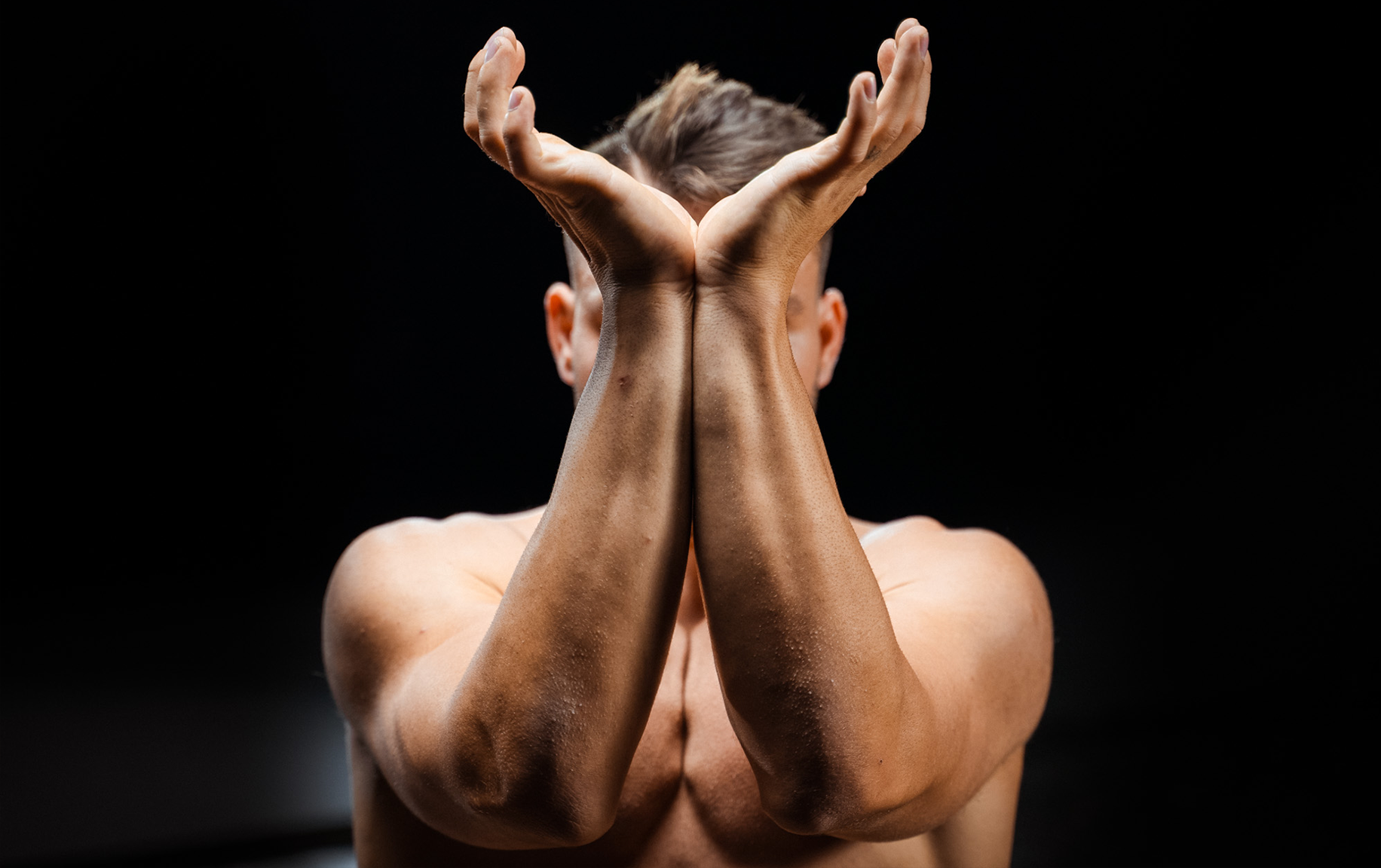

What's happening in the wrist
Now the problem with the wrist is that while there is a lot going on inside really not much is going on at all. The wrist is made up of lots of small bones and tendons packed tightly together. There is not a lot of space for anything. When standing on your hands the wrists get pushed together and little space turns into almost no space at all. This pressure can create inflammation and with that pain. Now here is where things get a bit tricky. More inflammation means less space which means more pressure and with that more inflammation. If we do not make some changes and adaptations to our training at this point we fall down head first in a bottomless pit.
To note at this point is that not all inflammation is bad. Inflammation is the body’s reaction to deal with change and to force adaptation. Additionally, it is your body’s way of telling you that you are either doing too much or maybe that you are simply doing something wrong.
How to avoid the inflammation in the first place
Now while I always prepare for the worst I also make a point of hoping for the best. In this case the best is no inflammation at all. There are a couple of things that you can do to reduce the risk of building up inflammation.
Technique is the first one and this is a big. Things get a bit unfair here. If you just start out hand balancing your wrists are not used to the pressure and therefore they are more likely to be in pain. On top of that your technique is not great just yet and your wrists get twice the beating. Whenever you sink into your shoulders they close and slide towards the front. The angle in the wrists becomes sharper and pressure intensifies. That is why for everybody but especially for beginners it is vital to keep workouts and sets short but focused to make sure your scapula is fully elevated in every set.
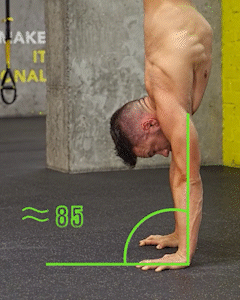
Planning is point two in our pursuit of reducing the risk of inflammation in our wrists. Plan your training, rest periods and warm up protocols well. The first two are pretty simple. Stick to the concept of progressive overload and build your practice slowly over time. Only train handstands every second day for the first couple of months. The last one is a bit more complex than what it first seems. When it comes to your wrists and handstands your warm up protocol does not start when you get to the gym. It doesn’t even start when your feet hit the floor and you get up in the morning. You are warming up for your handstands all day and every day. Keep your wrists and forearms warm. This can be done by simply wearing a long sleeve shirt instead of a tank top or by sitting next to the heater. Don’t sit next to the air con or hold your hand out of the window while driving. It’s simple things like these that can make all the difference when it comes to wrist and really all over health.
Looking at your nutrition can be another efficient way of lessening the chances of inflammation in your wrists . There are plenty of anti-inflammatory foods such as berries and turmeric but also foods that seem to be aggravating towards inflammation such as potatoes, dairy and sugar. Worst of all is alcohol. I was touring the world with different shows in my early 20s and as you can imagine we partied. A lot! And I can say for a fact. After years of absolutely foolish self experimenting: there is nothing worse for your inflammation than a hangover. So party responsibly.
What to do if you build up inflammation

Now we know where inflammation comes from and what to do to avoid it. Last but not least to the big question. What to do in the worst case? What to do when inflammation is present in the wrist and you feel pain?
The first thing to note here is that you have a small injury now and you need to treat it as such. A minor cold is nothing uncommon but if not taken care of it can turn into something rather nasty.
If your wrist inflammation is not going down within a few days make an appointment with a medical specialist right away.
We have to make sure your inflammation does not become chronic. Meaning we do not want it there to stay.
Train less. The first and most logical thing is for most of us the hardest to do. Remember how there is not a lot of space and with inflammation there is even less space and with that more pressure and the more pressure we apply the more inflammation we get?! Simply speaking: for the inflammation to go down you have to apply less pressure and for that you simply have to train less. Do less sets per training and take more days off from handstand work. Use that newly gained time to work on your flexibility, full body fitness and shoulder rotator cuff strength. When you come back to full time training handstands in a week or two you’ll have built stronger foundations than pre-injury and your handstands will advance much faster.
While I always recommend training less, I am well aware that this is the last thing we want to do and little Sascha the young acrobatic Performer obviously never listened to the PTs who told him that.
If you really have to continue to train because of an upcoming show, competition or simply because you want to look good on social media then I have 2 options for you.
Declined surface. This can be done either with special handstand blocks that are shaped in a small decline or simply with a wooden slightly elevated by a belt, pilates mat or similar on one side. Generally, I would recommend taking a board out of your closet, popping it on the edge of the carpet or whatever you can find and you’re good to go. The slight decline places the wrists in a less sharp angle and with that reduces pressure.

Parallettes are great as well when your wrists are struggling a bit. Due to the grip on the bars your wrists lose all extension. Keep in mind that your hands are now externally rotated by 90 degrees compared to a regular handstand on the floor so pressure on the shoulders and feeling for balance changes quite a bit. I would recommend only to use the parallettes for conditioning exercises such as push ups, Handstand push ups, presses and planches of all kinds.
Roll & Stretch Your wrists can also hurt due to too much tension in your forearms and shoulders. If your muscles are sore, cramping on pumping they get inflamed and pull on your wrist. This inflammation can and in most cases will spread into the wrist and the pulling will make your wrist less mobile and therefore more restricted with more pressure. So make sure to roll and stretch your forearms, shoulders, biceps, triceps and chest. Keep your entire engine warm and loose. It will do wonders!

What really made the difference for me
All of these strategies have really helped me out during multiple rough patches during my career but what really made the difference was icing my wrists.
Now medical opinions differ a bit when it comes to cold therapy but I can guarantee you that for me personally, for all of my clients and for fellow performers this was an absolute game changer.
Ice your wrists after every training and a second time before bed for 8-12min.
The idea here is to ice the fingers, entire hand, wrists and even the beginning of the forearm. For that fill a bucket with ice water and submerge your hands. If you’re not tough enough for that (and I really wouldn’t blame you) you can also do contrast baths jumping between hot and cold for 30sec each.
Careful never to ice before training! There should be at least 6h between your last ice session and your next training.
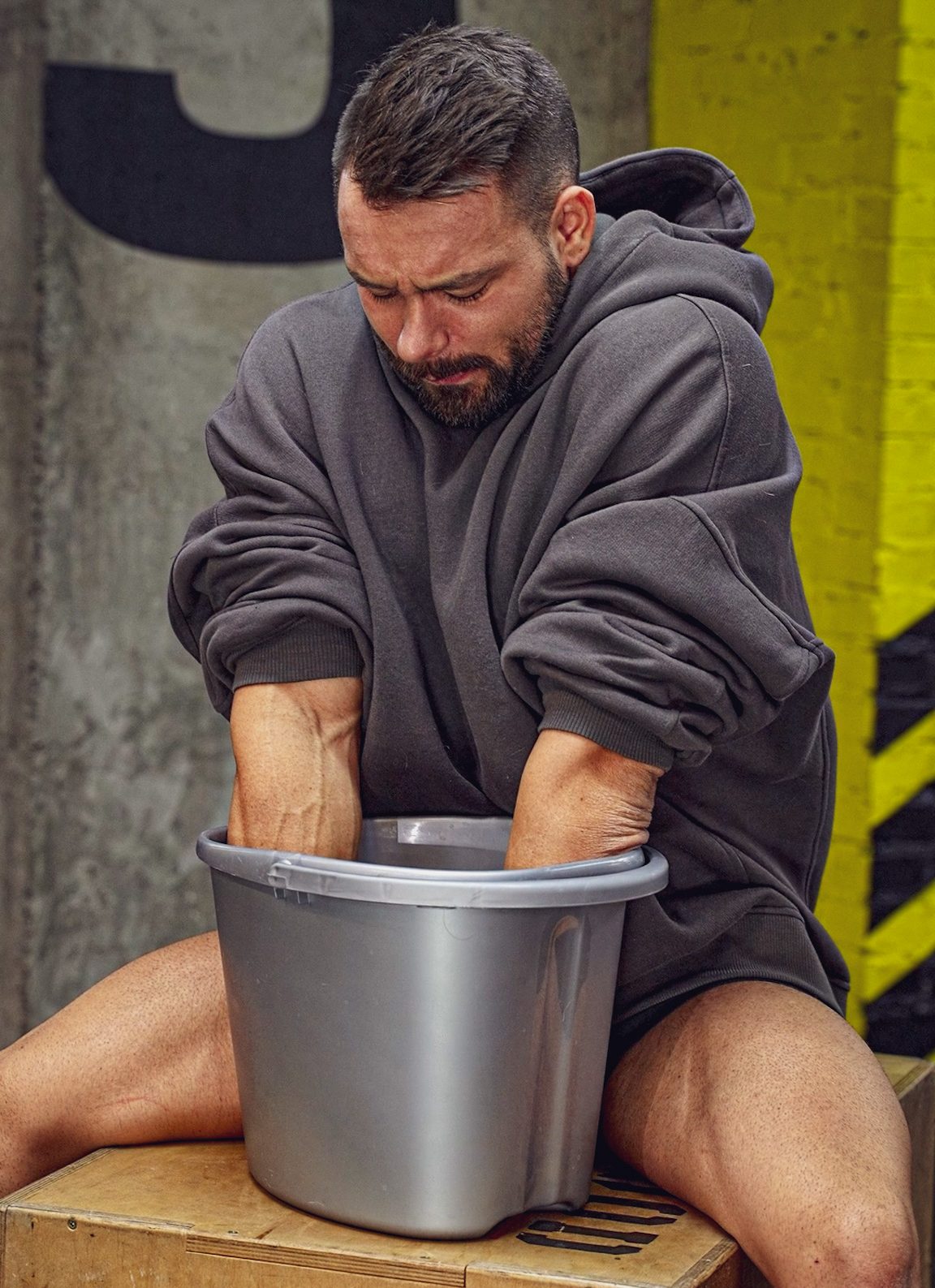
One last resort can obviously be anti-inflammatory drugs such as Ibuprofen to carry out inflammation. While this is efficient I really do not recommend it. As discussed above your body is building inflammation primarily to heal itself and to tell you that you’re doing too much of something or that your movement pattern is wrong. Both of these indicators are highly important for you to properly manage your own workouts. Take this away and you will run a very high risk of significantly more serious injuries that you might not be able to overcome without surgery.
Lately, studies have shown that athletes training on anti inflammatory drugs had reduced muscle growth due to the lack of adaptation signal sent by the lack of inflammation.
Besides the fact that your training is not as efficient and listening to the body is key. All kinds of medication and drugs you take obviously cause side effects, are hard to digest and should be extremely well thought through. Your life does not depend on handstands. Your life depends on your health!!
While there are plenty of reasons why your wrists might be hurting, inflammation caused by over use paired with poor technique is one of the main reasons that I see in hand balancers at any level. Watch your nutrition, respect your rest periods, ice your wrists and make adaptations to your training. If inflammation persists over a longer period of time make sure to seek professional medical aid to avoid chronic injuries.
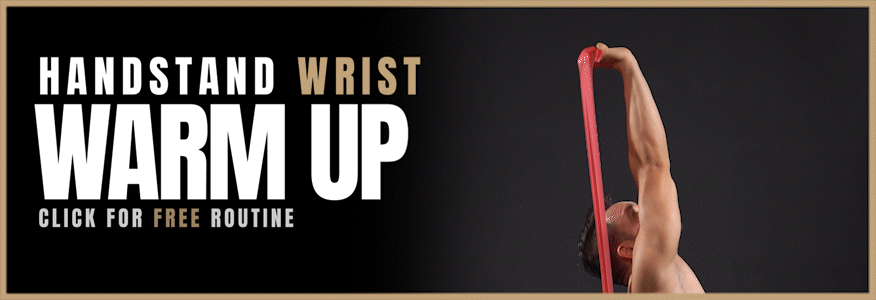
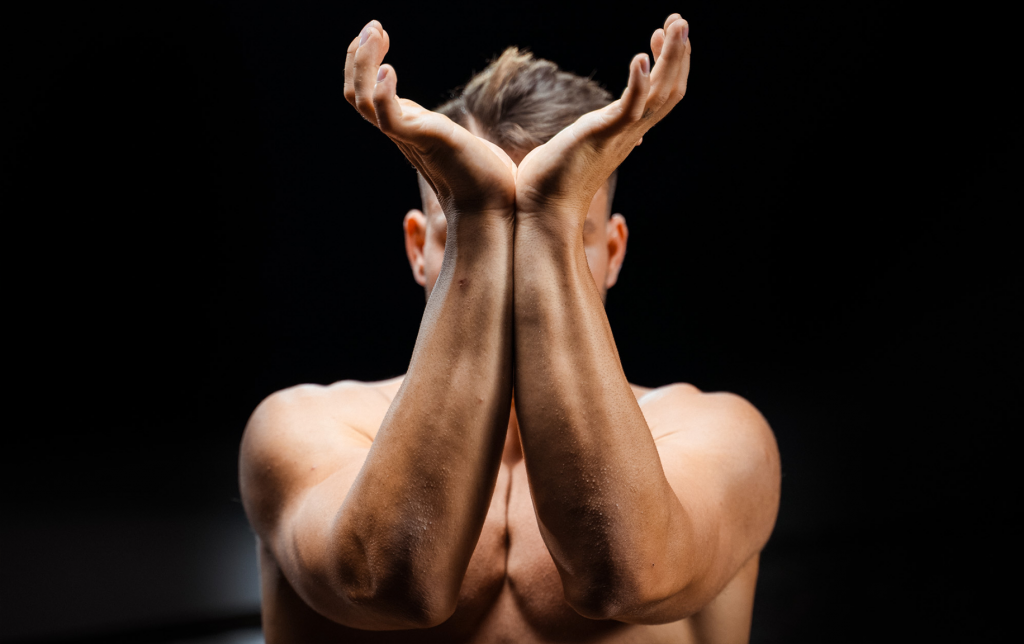

Awesome